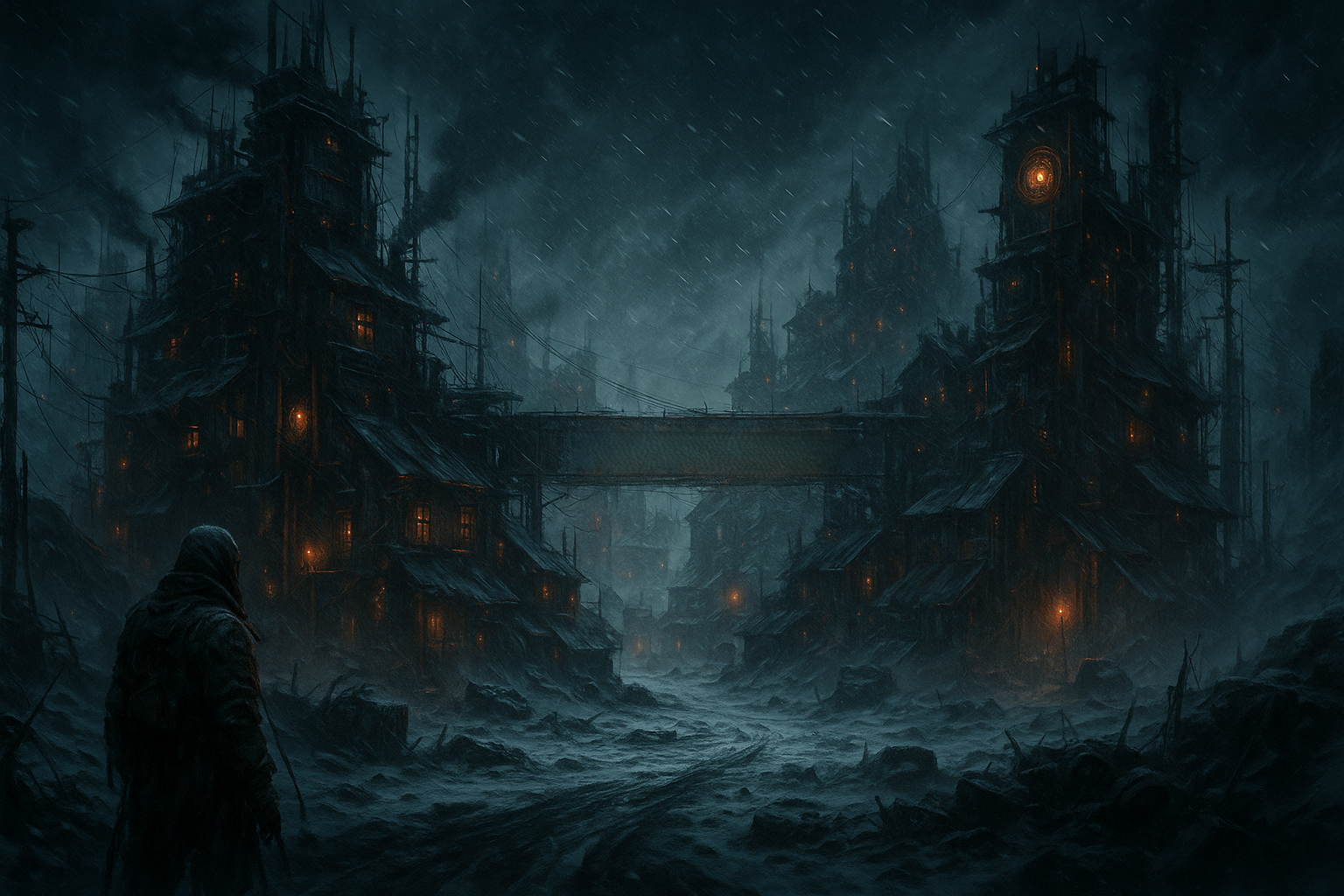Defiance
Defiance is not just a name—it is a vow, a warning, and a memory etched into the ice-bitten wood and steel bones of a city that has burned, frozen, and risen again more times than anyone cares to count. Nestled at the edge of the Driftlands near what was once Watertown, New York, Defiance is the last beacon before the snow-swallowed wastes of the Driftlands, where blizzards descend like judgment and the hills whisper with the voice of a Fey Sovereign.
The city has been built, abandoned, rebuilt, burned down, buried in ice, and scavenged for parts. A coalition of exiles and Others establishes the first camp just north of the Driftlands. They choose the site for its relative shelter and proximity to clean water and old-world salvage. But it fell only a few years later when a snowstorm descended without warning. Whiteout conditions lasted four days. When it cleared, dozens were found dead in their homes, flash-frozen in place. Entire blocks of Defiance II sunk into sudden sinkholes. Frost-slick caverns lined with strange glimmering roots claimed its prize. The third Defiance was claimed by a migrating hive of mutated carrion wasps that descended during a warm spring. But each time, someone came back. Someone nailed new boards to old bones, lit fires in frozen hearths, and dared the world to try again.
Defiance is a haven for Others—those twisted, changed, or outcast by the virus, by fear, or by the sins of old governments. Here, the mutated and modified walk side-by-side with those who still look human, united by the shared decision to fight for something better. The cold kills indiscriminately, and that has a way of forging bonds.
The layout of Defiance is shaped by what it remembers. Its Central Hub is built atop the reinforced ruins of the municipal hall, now wrapped in thick insulation and powered by scavenged solar arrays and wind sails. Around it, concentric districts spiral outward like frost rings on old glass, each layer a different era: fire-scorched beams from the first settlement, modular buildings salvaged from crashed supply convoys, hand-carved log cabins from the time the builders tried to go back to basics.
Its defenses are half necessity, half ritual. Bone markers line the southern ice roads, each carved with the names of the dead or the missing. Watchtowers blink with oil lamps and flickering LEDs, watching the Driftlands for the white winds. Every three to five years, the events come down from the Driftlands and bury the city in silence. Roofs collapse. Frost enters lungs. But the people of Defiance would rather brave the cold than risk the open plains, where the unblessed roam in packs and the scent of blood draws worse than wolves.
Defiance is governed by no single ideology, but by a chorus of stubborn voices. Factions rise and fall, yet all are bound by the understanding that if they do not hold together, the ice will take them all. The city lives and dies by consensus and compromise, guided by a rotating council formed from faction delegates, community votes, and the occasional voice of a revenant elder who remembers the First Defiance.
Trade is a lifeline here, carved through snow and risk. Scavengers barter heated clothing and recharged batteries for food and medicine. Traders brave the ice roads to reach the warmer valleys. The economy is one of grit and grit alone, with currency replaced by trust, favor, and heat.
Defiance is not a paradise. Its infrastructure is brittle, its laws often improvised, and its security held together with rust and resolve. But it stands. And in a world that has ended, that is enough. No matter how often it falls, someone will always come back, hammer in hand, teeth clenched, whispering the words written on every doorframe in the city:
Die fast, or live like a Defiant.
RUINED SETTLEMENT
Repeatedly




I love the post apocalyptic setting - as you might already know ;) Defiance really seems like a place that endures despite the hardships and I think the last line of your article is great to sum up this message. Bravo!
Thanks, glad you liked it! :D